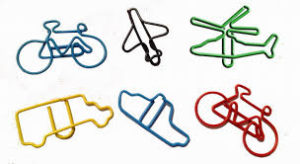Daycare Snacks Get the Thumbs Down
From animal crackers to gummy fruit snacks and calorie-laden juice drinks, kids in child care are not getting the nutrition they need from daily snacks, according to a new study from Cincinnati Children’s Hospital Medical Center published online in the journal Childhood Obesity.
The study – the first of its kind to compare meals to snacks – shows that despite efforts to improve the diets of children in child care settings, meals – and particularly snacks – still lack nutritional quality. Snacks, while smaller than meals, are an integral part of a preschooler’s diet, typically comprising 26 percent of their daily calorie intake.
Researchers from Cincinnati Children’s reviewed menus at 258 child care centers in southwestern Ohio, analyzing the average weekly frequency for servings of fruits, vegetables, lean meats, juice (100 percent) and sweet or salty foods. They found that the composition of lunches differed from snacks in all food categories.
Fruits, vegetables and meats were rarely included in snacks, but were listed almost daily as a component of lunches. Conversely, 87 percent of centers served sweet and salty foods – such as gummy snacks, pretzels and crackers – at snack time more than three times per week, but rarely at lunch.
The study also found that:
• 87 percent of centers rarely listed non-starchy vegetables for snacks, but 67 percent included them at lunch more than three times per week.
• 100 percent fruit juice was listed as a component of snack at least three times per week in over a third of the centers surveyed, but rarely with lunch.
• 60 percent of the centers reported serving 2 percent milk to children older than age three; 31 percent served whole milk.
“Snack time for kids is a missed opportunity,” said Kristen A. Copeland, MD, from the Division of General and Community Pediatrics at Cincinnati Children’s and the study’s lead author. “With some 75 percent of kids ages 3–5 in child care, revising the types of foods and beverages served as snacks in child care may be a way to address the growing obesity problem.”
The USDA is expected later this month to release new guidelines for meals and snacks served in child care programs under the Child and Adult Care Food Program. These guidelines are expected to call for increased variety in the types of beverages and foods served at snack times among participating programs, and specifically including more fresh fruits and vegetables and meat or meat alternatives as snacks.
